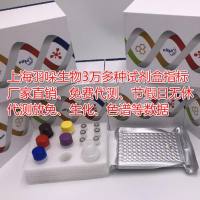Family Shuffling with Single-Stranded DNA
互联网
互联网
相关产品推荐

DNA Shuffling试剂盒
¥2691

1 kb DNA分子量标准
¥100

重组蛋白|Recombinant Mouse Ectonucleotide pyrophosphatase / phosphodiesterase family member 7 Protein (His Tag)
¥2310

DRB5/DRB5蛋白Recombinant Arabidopsis thaliana Double-stranded RNA-binding protein 5 (DRB5)重组蛋白dsRNA-binding protein 5 Short name: AtDRB5蛋白
¥2616

SIGIRR/SIGIRR蛋白Recombinant Human Single Ig IL-1-related receptor (SIGIRR)重组蛋白Single Ig IL-1R-related molecule;Single immunoglobulin domain-containing IL1R-related protein;Toll/interleukin-1 receptor 8 (TIR8)蛋白
¥1368
相关问答

